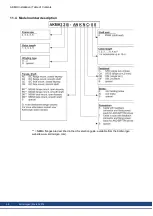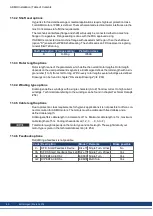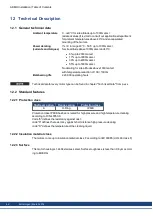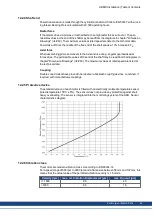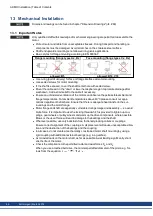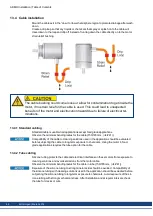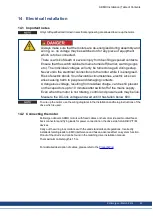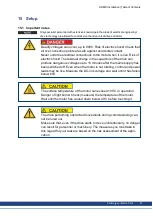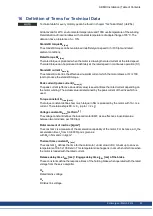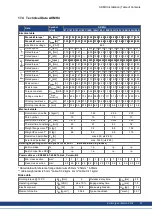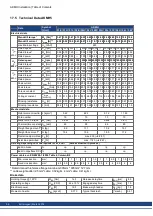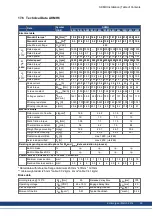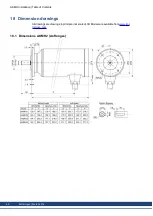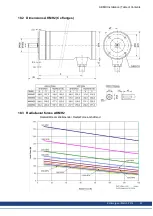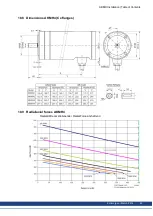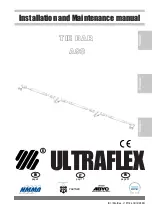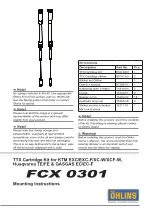
15.2 Guide for setup
The procedure for setup is described as an example. A different method may be appropriate
or necessary, depending on the application of the equipment.
1. Check the assembly and orientation of the motor.
2. Check the drive components (clutch, gear unit, belt pulley) for the correct seating and set-
ting (observe the permissible radial and axial forces).
3. Check the wiring and connections to the drive. Check that the earthing is correct.
4. Test the function of the holding brake, if used (apply 24V, brake must be released).
5. Check whether the rotor of the motor revolves freely (release the brake, if necessary).
Listen out for grinding noises.
6. Check that all the required measures against accidental contact with live and moving
parts have been carried out.
7. Carry out any further tests which are specifically required for your system based on the
risc assessment.
8. Now commission the drive according to the AKD setup instructions.
9. In multi-axis systems, individually commission each drive unit (drive and motor).
15.3 Trouble Shooting
The following table is to be seen as a “First Aid” box. There can be a large number of different
reasons for a fault, depending on the particular conditions in your system. The fault causes
described below are mostly those which directly influence the motor. Peculiarities which
show up in the control loop behaviour can usually be traced back to an error in the param-
eterization of the drive. The documentation for the drive and the setup software provides infor-
mation on these matters.
For multi-axis systems there may be further hidden reasons for faults.
Fault
Possible cause
Measures
Motor doesn’t
rotate
—Drive not enabled
—Break in setpoint lead
—Motor phases in wrong sequence
—Brake not released
—Drive is mechanically blocked
—Supply ENABLE signal
—Check setpoint lead
—Correct the phase sequence
—Check brake controls
—Check mechanism
Motor runs away —Motor phases in wrong sequence
—Correct the phase sequence
Motor oscillates
—Break in the shielding of the feedback
cable
—amplifier gain to high
—Replace motor
—use motor default values
Error message:
brake
—Short-circuit in the supply voltage
lead to the motor holding brake
—Faulty motor holding brake
—Remove the short-circuit
—Replace motor
Error message:
output stage fault
—Motor cable has short-circuit or earth
short
—Motor has short-circuit or earth short
—Replace motor
—Replace motor
Error message:
motor tem-
perature
—Motor thermostat has switched
—Loose feedback connector or break in
feedback cable
—Wait until the motor has
cooled down. Investigate why
the motor becomes too hot.
—Check connector
Brake does not
grip
—Required holding torque too high
—Brake faulty
—Motor shaft axially overloaded
—Check the dimensioning
—Replace motor
—Check the axial load, reduce
AKMH Installation | Table of Contents
52
Kollmorgen | March 2014
Summary of Contents for AKMH2
Page 62: ...18 4 Dimensions AKMH3 Ax flanges AKMH Installation Table of Contents 62 Kollmorgen March 2014...
Page 64: ...18 7 Dimensions AKMH4 Ax flanges AKMH Installation Table of Contents 64 Kollmorgen March 2014...
Page 66: ...18 10 Dimensions AKMH5 Ax flanges AKMH Installation Table of Contents 66 Kollmorgen March 2014...
Page 68: ...18 13 Dimensions AKMH6 Ax flanges AKMH Installation Table of Contents 68 Kollmorgen March 2014...
Page 73: ...AKMH Installation Kollmorgen March 2014 73...

